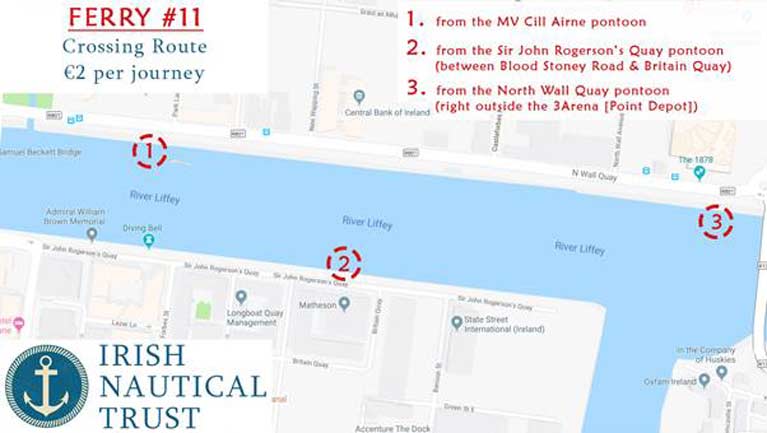Displaying items by tag: Relaunched
“Cross the Liffey in a Jiffy” in Dublin Docklands As Historic Ferry to Return After 35 Years
#dublinport - In Dublin’s Docklands, the historic No.11 Liffey Ferry otherwise known as the 'Dockers' ferry will today officially return to the capital’s waters after a 35-year absence.
The much-loved service that linked the north and south docks is to return following a complete restoration of the ferry in a joint project by Dublin Port Company and Dublin City Council.
The ferry was a vital link for the Liffey side communities at a time when the nearest river crossing was Butt Bridge but was decommissioned in 1984 following the completion of the East Link Bridge.
But now the No. 11 will be a familiar sight again in the heart of Dublin as she taxis passengers between three points - the 3Arena to Sir John Rogerson’s Quay to MV Cill Airne at North Wall Quay and back starting Monday 11th February, running Monday to Friday between 7am and 7pm.
On board today's relaunch will be the Lord Mayor of Dublin, Nial Ring, as a guest of honour at a ceremony held by Dublin Port Company to mark the No. 11 Liffey Ferry’s return to service.
Also coming on board for her first official trip across the river again will be Mr Richie Saunders from Ringsend, who worked on the No.11 originally as a coxswain, who was instrumental in preserving the boat in recent years, and who will be back at the helm again to ferry a new generation of passengers north and south of the river.
The service to cross the Liffey dates back to 1665 when it was given a Royal Charter by King Charles II and went on to last more than 300 years.
A capacity of 18 passengers will be taken on each crossing and the ferry service will also enable commuters across the Docklands. Fares for the trip will be €2 for each of the three-minute journey point to point – with the vessel equipped to accept both Leap Card and cash fares.
 A map of the No.11 Liffey Ferry crossing route
A map of the No.11 Liffey Ferry crossing route
The No. 11 was essential transport for workers at the docks and became affectionately known by Dubliners as ‘the dockers’ taxi’. The boat was bought by Dublin Port Company in 2016, having been preserved by Richie Saunders with the aim of bringing her back to service. Operated by the Irish Nautical Trust, all proceeds from passengers’ fares will be used to help fund the return of a new maritime training programme.
The Irish Nautical Trust’s original maritime training programme, which has been dormant for the past 12 years, is now set to resume next month, and will offer young adults from the inner city and docklands areas the opportunity to gain practical marine experience and a formal qualification accredited by the Irish Sailing Association.
Each course will provide 8-10 people at a time with six months’ hands-on experience of the port, the wider maritime industry, driving, skippering, essential boat maintenance and repairs under the tutelage of experienced and retired seamen.
The objective of the programme is to give young people a skill set and future in Ireland’s maritime industry through learning by doing, with the No. 11 Liffey Ferry the new mascot of the programme. In this way, essential maritime skills now in short supply are less at risk of being forgotten or lost if they can be passed on to a new generation through formal training and mentoring.
























































